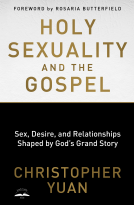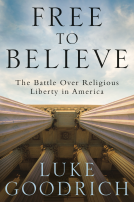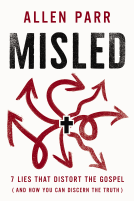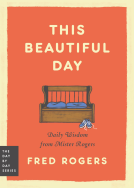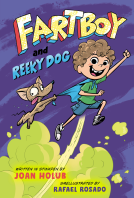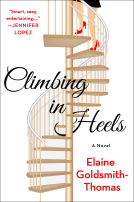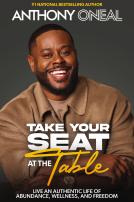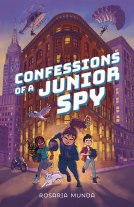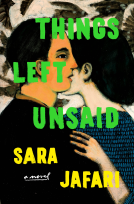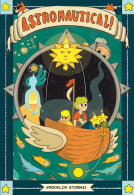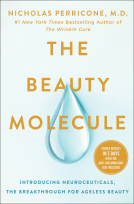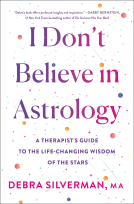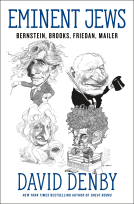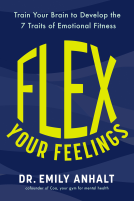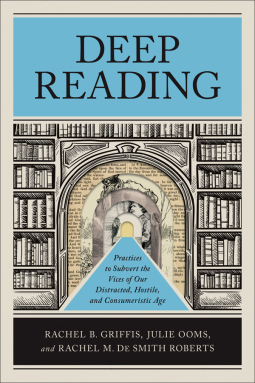
Deep Reading
Practices to Subvert the Vices of Our Distracted, Hostile, and Consumeristic Age
by Rachel B. Griffis; Julie Ooms; Rachel M. De Smith Roberts
This title was previously available on NetGalley and is now archived.
Send NetGalley books directly to your Kindle or Kindle app
1
To read on a Kindle or Kindle app, please add kindle@netgalley.com as an approved email address to receive files in your Amazon account. Click here for step-by-step instructions.
2
Also find your Kindle email address within your Amazon account, and enter it here.
Pub Date May 28 2024 | Archive Date Jun 25 2024
Baker Academic & Brazos Press | Baker Academic
Talking about this book? Use #DeepReading #NetGalley. More hashtag tips!
Description
"Show[s] how deep reading habits help us manage distraction and bring about individual and communal flourishing."--Christianity Today
This book helps readers develop practices that will result in deep, formative, and faithful reading so they can contribute to the flourishing of their communities and cultivate their own spiritual and intellectual depth.
The authors present reading as a remedy for three prevalent cultural vices--distraction, hostility, and consumerism--that impact the possibility of formative reading. Informed by James K. A. Smith's work on "the spiritual power of habit," Deep Reading provides resources for engaging in formative and culturally subversive reading practices that teach readers how to resist vices, love virtue, and desire the good.
Rather than emphasizing the spiritual benefits of reading specific texts such as Dante's Divine Comedy or Adventures of Huckleberry Finn, the authors focus on the practice of reading itself. They examine practices many teachers, students, and avid readers employ--such as reading lists, reading logs, and discussion--and demonstrate how such practices can be more effectively and intentionally harnessed to result in deep reading. The practices apply to any work that is meant to be read deeply.
Advance Praise
“Drawing from years of experience and research, Deep Reading offers insights, approaches, and practices to equip readers and teachers of readers. The book not only instructs—it inspires. I wish I had this work when I began teaching thirty years ago. It’s not only a book for teachers; it’s a book for all readers who desire to read deeply and to live deeply as well.”—Karen Swallow Prior, author of The Evangelical Imagination: How Stories, Images, and Metaphors Created a Culture in Crisis
“This book eloquently joins the other voices calling us to soul-forming kinds of reading that can resist our descent into superficiality and hostility. Importantly, it goes beyond them in describing not just the texts we should read or the virtues we should seek but the actual practices that might get us there. All those who use text to teach others should read it. Anyone else who cares about reading and spiritual growth should join them.”—David I. Smith, director, Kuyers Institute for Christian Teaching and Learning, Calvin University
“Deep Reading ought to be read and wrestled with by all those who want to read carefully and well, and it’s particularly essential for those tasked with guiding others’ reading in the classroom, the church, or the home. With its wealth of creative and practical examples, this book will enliven our efforts to read redemptively. In a culture where words more often cater to vicious appetites than challenge us to cultivate virtuous dispositions, this book is sorely needed.”—Jeffrey Bilbro, associate professor of English, Grove City College; editor-in-chief at Front Porch Republic
“While Christian literary approaches frequently are concerned with what specific texts should be read (canon wars) or their compatibility with Christianity (worldview critique), Deep Reading contributes to an important new and newly critical genre that views reading as a spiritual practice: a subversive activity contesting modern distraction, polarization, and consumerism. This jewel of a book will speak to readers of all sorts and inspire them to engage in deep, open, and generous reading.”—Susan VanZanten, senior research professor in humanities, Valparaiso University
“This well-researched and highly engaging book by three seasoned English professors provides both theological impetus and practical guidance for becoming wise, hospitable readers who read to gain wisdom, an empathetic imagination, and a greater capacity for love. Deep Reading is both timely and timeless as it highlights contemporary manifestations of the historical vices of ‘distraction,’ ‘hostility,’ and ‘consumerism’ that hinder attentive, active reading. These three educators both argue and illustrate the many ways in which ‘deep reading is an antidote to the vices of our age.’ Deep Reading is highly recommended for any lovers of books, especially educators; we all have much more to learn about embodied, engaged, deeply human reading.”—Mary McCampbell, author of Imagining Our Neighbors as Ourselves: How Art Shapes Empathy
Available Editions
| EDITION | Other Format |
| ISBN | 9781540966957 |
| PRICE | $24.99 (USD) |
| PAGES | 240 |
Available on NetGalley
Featured Reviews
 Jonathan N, Reviewer
Jonathan N, Reviewer
I like to read a lot of genre books but after all, I can use many many hours to read inspirational books. I feel that when I am inspired myself, I can truly inspire other person in my life. This habit of deep reading, like Rachel told us, can be a way to flourish ourselves and our community. Thank you for reminding this truth to all of us.
 A J G, Educator
A J G, Educator
Deep reading
this is a timely and important book, a manifesto for reclaiming deep reading, slow reading, reading for pleasure as an act of resistance against capitalism. The authors, write from backgrounds in Christian educational settings, and their theology informs the text throughout, but the book is accessible for those from any faith background or none. It is clearly written, with none of the repetitiveness you often find in multi-author books.
The authors tackle three big problems our modern society faces which they encounter in the humanities classroom; distraction, hostility and consumerism. These three vices are not separate but entwined and enmeshed. Each section of the book finishes with suggestions of how to tackle this particular vice by specific practices to reclaim deep reading and learning to re-read.
An insightful and incredibly practical guide from three professors who clearly deeply love the written word and respect its power. I'll be recommending it widely, albeit with the caveat that a trans author is deadnamed when referencing a book written prior to their transition. It was a jarring moment in an otherwise incredibly generous book.
 Conrade Y, Reviewer
Conrade Y, Reviewer
Recently, there has been a swath of books about reading, good reading. Since Mortimer Adler's classic on "How to Read a Book," there has been various additions from various authors like Robert Alter, Jeffrey Bilbro, Harold Bloom, Susan Gallagher & Roger Lundin, Alan Jacobs, Karen Swallow Prior, Jessica Hooten Wilson, etc. This book is a compelling addition to this library of excellent perspectives on reading. It is a treasure to behold. The key thesis in this book is that reading is a powerful mechanism for spiritual formation. Before embarking on this journey, there are three major impediments to overcome: Distraction, Hostility, and Consumerism. The way to achieve deep reading is to adopt practices to subvert these three vices. Otherwise, we become vulnerable to the ills of technology, adopt superficial reading, and lose the opportunity to grow the virtues of good reading. This book asks and probes not just the things we read but also questions surrounding who we are, why we read, and how we are reading. In other words, readers will not only be reminded about the need for deeper reading skills, they will recognize how modern culture is impacting general reading habits. These are warnings to be heeded wisely. We ignore them at our peril. The authors ask some poignant questions such as:
- “What do our reading habits communicate to ourselves and others about what we are doing and why?
- How do our reading rituals give us opportunities to practice attentiveness, hospitality, and leisure?
- In what ways can our reading practices cultivate equity and justice?
- How can we form emotional attachments to ideas, language, characters, and stories?
- How can we grow in genuine appreciation for the texts we are reading communally?
- What aspects of the reading community help us to develop virtuous practices (such as patience, docility, or contentedness) in other areas of our lives?”
Each chapter begins with an overview of the cultural contexts we are in. The "Theological and Cultural Considerations" critiques the predominant forces that threaten good reading. Using support from reputatble sources, the authors help us to see how the world is increasingly changing the way we read. The section "Practices and Examples" provides us with different methods to deal with the growing problem. Using techniques and practices such as "Lectio Divina," "Field Trips," etc, we are equipped with ways to tackle the problems that plague modern readers. The "Summary of Suggested Practices" is an excellent section to help readers implement the things read in the chapter. This is supplemented by the "Reflection and Discussion Questions" to invite others to read and practice along with us.
By addressing the three vices that threaten deeper reading, the authors address the problem of reading at three levels. The first level is that of tackling distraction. This is a real problem today among many people. For instance, in an age of social media, we are grooming a generation of superficial browsers instead of inspired readers. The authors are spot on when they identify the differences between worldview and specific practices. The former is a crude blanket-wise generalization while the former requires a more discerning attitude.
The second level is that of hostility in public life. While many blame social media and the widespread use of the Internet, the root of the problem is the lack of respect for alternative views. The authors recommend greater levels of inclusive reading as well as increasing opportunities for community reading. Read widely. Engage charitably. Listen graciously.
The third level teaches us to read beyond any forms of consumeristic bent. Instead of reading to mine information, read to grow in other aspects of life such as discernment, growth, pleasure, spirituality, wisdom, and so on.
My Thoughts
==============
Here are my three thoughts about this book. First, it is a necessary counter against the present age of casual superficiality and misguided reading. Amid the dwindling numbers of bricks-and-mortar bookshops, there is a rising number of eBooks and Internet "reading." Not only are people reading less printed books, they are increasingly losing the ability to engage deeper reading in the electronic media. That is largely the perspective from many digital immigrants, or those who grew up in the printed media environment. In those days, students still buy printed textbooks for their studies. Newspaper delivery occurs every morning. Adults read spread out newspapers with their morning coffee. Bookshops can be easily found at malls and shopping centers. Today, it is hard to find a single bookshop even at major malls. Students do all the reading online. Many no longer buy books leading to the demise of many bookshops and publishers. Having born into an Internet world, many digital natives will find it normal to read from the computer screen. Regardless of whether one is a digital immigrant or a digital native, the threats to deeper reading is real and this book offers a way forward to cultivate better reading. The practices give us many ways to improve "attentive reading." They also encourage community reading in order to foster multi-perspectives in our understanding of the texts.
Secondly, the authors point out one of the sources of modern hostility: Misunderstanding due to misguided indoctrination. Using higher education as an example, both Christian as well as secular institutions are guilty of lopsided use of unquestioned ideology instead of thoughtful Christian inquiry. This easily leads to a us-vs-them paradigm which is increasingly polarizing a pluralistic society. Partially due to the flawed worldview approach of teaching, the alternative would be to listen as empathy, and to learn to discern the different voices in our culture. Learning when and how to critique as well as to listen is key to spiritual maturity. The authors present a beautiful chapter on prudent reading beyond dogmatism. Instead of letting worldviews be our paradigm, the authors urge us to lead prudent reading practices guide our interpretation of worldview. This is a paradigm shift and requires some patience for understanding first and adoption later. This might very well be the most difficult challenge issued in this book. We have become so used to worldviews as a way to interpret life that to unlearn that would require substantial changes and great humility. It is good to note that even the authors of this book are not in full agreement. That is why there are frequent qualifications throughout the book, where a thought was attributed to a specific author named in bracket. The recommended "promiscuous reading" approach can be controversial. Plus, not every layperson has the ability of an English professor to read multiple texts with prudence.
Finally, I affirm that good reading is re-reading. This is also a challenge for many of us. There are so many good books to read but not enough time to read them all. Thus, we need to decide how best to make use of our time. I have friends who tell me that to supplement every two or three new books with an old classic. Not all new books are worth reading. Likewise, not all old books should be read only once. Some of my friends also make it a point to read certain classics every year, such as Augustine's "Confessions," or modern works like CS Lewis's "Mere Christianity," GK Chesterton's "Orthodoxy," or Parker Palmer's "Let Your Life Speak." Of course, the Bible is the one book that we all should read as frequently as possible. Will this book be a classic for reading? I don't know. What I do know is that this book deserves a wider audience in the light of an increasingly distracted, hostile, and consumeristic world.
I highly recommend this book not only as an antidote against these vices but also a useful resource to cultivate deeper reading and spiritual growth.
Rachel B. Griffis (PhD, Baylor University) is associate professor of English at Spring Arbor University in Spring Arbor, Michigan.
Julie Ooms (PhD, Baylor University) is associate professor of English at Missouri Baptist University in St. Louis, Missouri.
Rachel M. De Smith Roberts (PhD, Baylor University) is associate professor of English at North Greenville University in Tigerville, South Carolina.
Rating: 4.75 stars out of 5.
conrade
This book has been provided courtesy of Baker Academic via NetGalley without requiring a positive review. All opinions offered above are mine unless otherwise stated or implied.
 Gina D, Reviewer
Gina D, Reviewer
The authors (one of whom is a friend of mine) offer a thoughtful critique of the pervasive cultural trends, from all over the ideological spectrum, that damage our ability to read deeply, and share practices tested in their own classrooms to help us overcome these trends and bring back the delight of reading. The style is academic and rather formal, but there are lots of very helpful ideas and insights here that are well worth exploring. Thanks to NetGalley for the ARC.
The team of authors behind Deep Reading lament the culture-wide loss of focused attention, and they push back with powerful practices to equip educators, students, and all readers for meaningful and formative reading experiences. They have managed to do this without pages and pages of recommended books, asserting instead that “deep reading practices… matter as much as what [we] read.”
While our cultural context promotes distraction, hostility, and a consumeristic approach to everything, deep reading promotes the virtue development that comes with a flourishing reading life. We read for leisure. We read because we are human, and there is delight to be found between the covers of a book.
I especially appreciated the authors’ invitation to “listen with charity to texts from the past,” a sure defense against chronological snobbery. However, while I acknowledge the possibility that paying attention to worldview in our reading could lead to hostility in some readers, I would argue that it has the benefit of heightening discernment and encouraging the reader to identify the author’s presuppositions.
Deep Reading was written by educators, and is, therefore, full of helpful information for promoting deep reading in the classroom. However, Christian readers of all professions will find a trustworthy guide for analyzing and interrogating their own reading practices and addressing any slippage or concessions to the culture they find there.
 Rosa S, Educator
Rosa S, Educator
Oh dear me. I've always been a skimmer and a surface-scratching reader, who only takes the plunge into material when doing research for a specific class. I guess this one is written for me. (And for you, if you use a similar skip-and-glean technique.)
For me, reading as a spiritual practice is mostly confined to the Bible. And I hardly read it - I listen through it 5-6X a year. My husband the theologian reads for breadth and depth as well as entertainment.
So whatever your style, read and consider this admonition. It's your encouragement to find a book that others have found meaningful. Use it as a spiritual drink, a sabbath rest, and a spiritual reflection to see God, others, and self more clearly.
